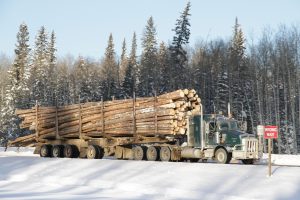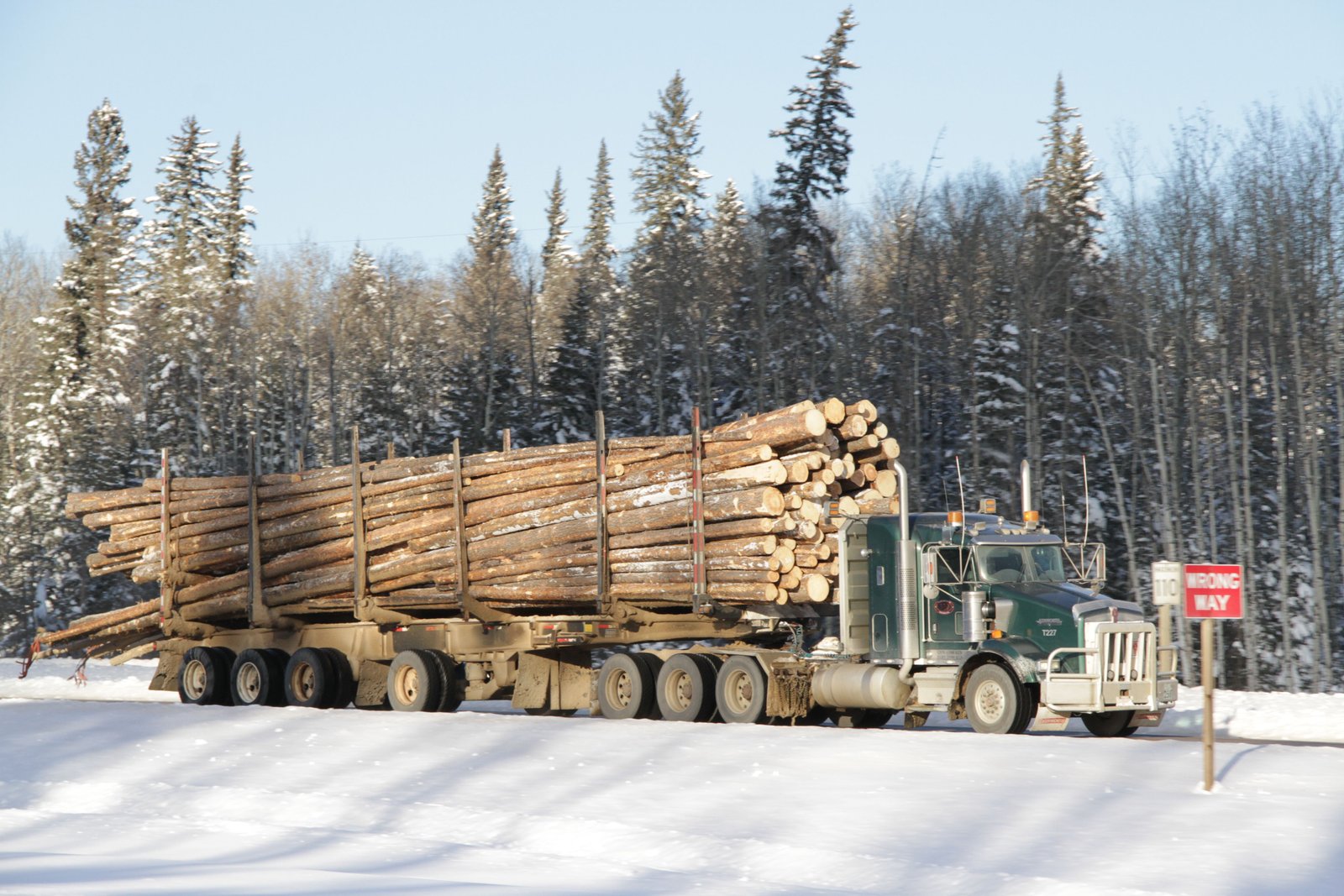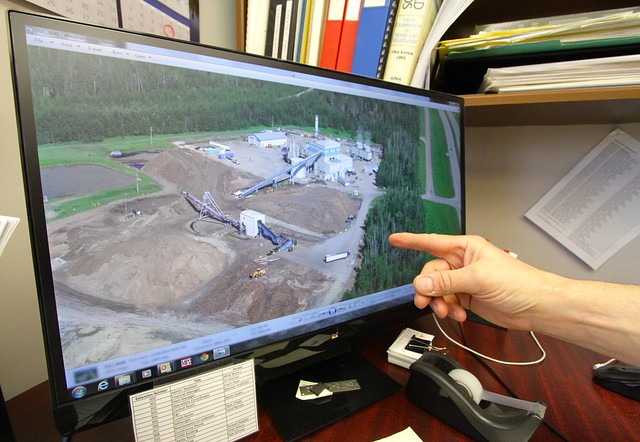By David Dodge and Duncan Kinney

Looking a little like the Starship Enterprise, one person in the control room monitors in the incoming logs and the first part of processing of logs in their Whitecourt sawmill.
When I picture a sawmill I picture Astar jumping through the live wires, spinning gears and whirring saw blades of Planet Danger. But the modern sawmill is a marvel of modern technology, mostly devoid of humans and full of machinery that debarks logs, sizes them up and runs them through a Rube-Goldberg-like contraption that cuts them down to usable lumber.
At least that’s what we saw in a sawmill facility that we toured in Whitecourt run by Millar Western. The company has a sawmill and a pulp mill in Whitecourt, a town of about 10,000 located two hours northwest of Edmonton.
Only about 50 per cent of the log biomass is turned into lumber. Most of the other half (40 per cent) is chipped and fed to the pulp mill. The remaining 10 per cent is leftover as waste. They process over two million cubic meters a year at their facilities, leaving them with about 250,000 tonnes of bark, sawdust, shavings and other assorted woody leftovers.
In the past these leftovers were burned in what’s called a beehive burner. But there are no environmental controls on these beehive burners and the Alberta government is slowly phasing them out.
Pollution or power
Twenty years ago Millar Western decided to turn their waste into something useful and built a 25-megawatt biomass-fired power plant, which is now Whitecourt Power.
“The precipitating factor certainly was that we had the beehive burners, which had to be shut down at the time, but then of course, we saw it as an opportunity as well to do something rather than burning the fuel,” says Stefan Demharter, VP Wood Products for Millar Western Forest Products.
That opportunity was producing green electricity instead of smoke and pollution. The wood waste is referred to as hog fuel and it is all trucked ten minutes down the road to the biomass power plant.
Wood is certainly not a new fuel. We’ve been using it since the invention of fire to keep warm, but can it be a big part of our electricity mix in our modern age?
Biomass provides green baseload power — an important consideration for grid operators who want to integrate more renewable energy by balancing the intermittent nature of solar and wind. And when the forest is managed properly, the resource is a lot closer to being carbon neutral than coal or natural gas.
Biomass’ 60-kilometre diet

The wood for Millar Western’s mills comes from the boreal forest surrounding the Whitecourt area in northern Alberta. Waste from the mills is burned by Whitecourt Power to generate electricity. Photo David Dodge, Green Energy Futures
The economics of these plants have a pretty obvious restriction however.
“It’s economically feasible within a 60-kilometre radius. But as soon as you going outside of 60 kilometres and have to put the cost of trucking to it, it skates north of the economic curve,” says Demharter.
Biomass is heavy and being close to good biomass resources is always going to be your biggest limiting factor.
This particular plant has EcoLogo status, which means they use only “clean” wood. No construction waste or painted or treated materials are used. That certification means Whitecourt Power can sell renewable energy credits (RECs), giving them a small ancillary revenue stream and one that recognizes the value of their clean electricity over your typical coal or natural gas fired electrons.
Biomass business plan
“We get paid for electricity we sell, we get paid by farmers for our wood ash that we take to the farmers’ fields. We get paid for the RECs that we sell, and we also get paid a small amount from Millar Western for the waste wood,” says Brennan Anderson, operations manager for Whitecourt Power. The electricity they produce is the largest source of revenue.
The other big advantage to burning wood waste for power over using a beehive burner is the pollution controls.
“As for what comes out of our stack, it’s pretty much mostly water vapour. We remove 99.9% of particulates with the baghouse, and our CO and oxides of nitrogen emissions are well below our approval limits. So, in comparison to a beehive burner, we are far away the better way to go,” says Anderson.
After Millar Western initially set up the project, it was sold to a company called Capstone Infrastructure, but Millar Western is again getting back into the power business in a small way. They are building a small five-megawatt $92-million project that will collect and burn biogas taken from their waste sludge. The project is small relative to the mills’ thirst for electricity — the sawmill and pulp mill together consume more than 85 megawatts of electricity.
The great boreal forest straddles our country. It is our shared inheritance and burning the wood waste from forestry companies for power is the proper way to maximize the resource. If done on a wide scale, our forestry companies could play a much more significant role producing renewable electricity, just as they do in Finland.


